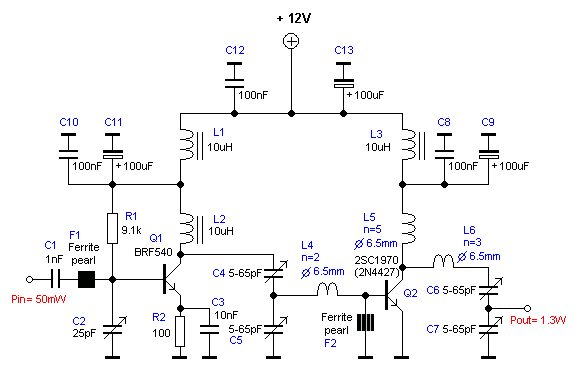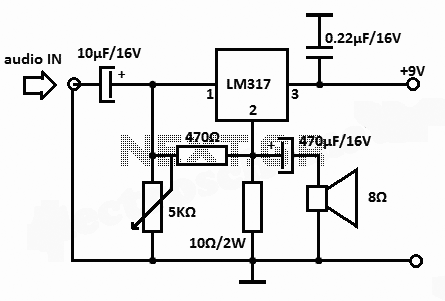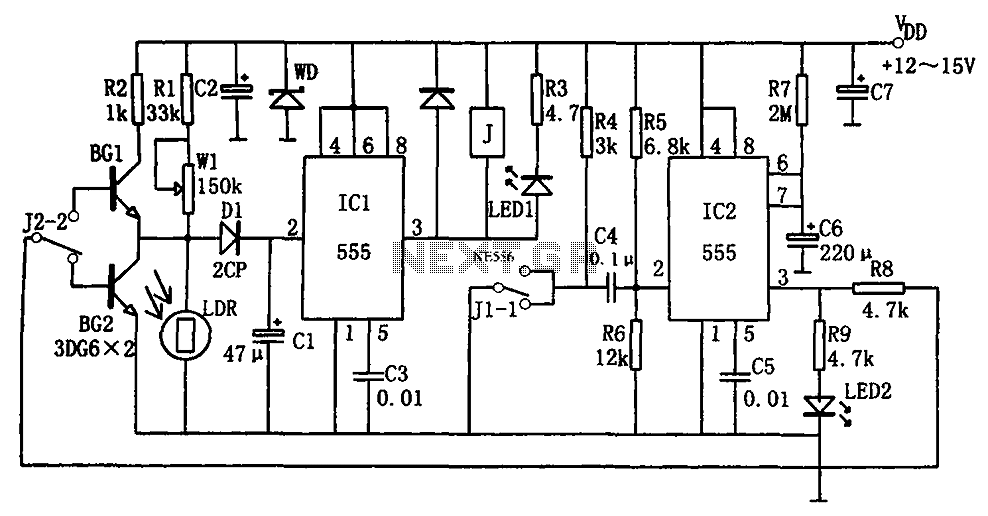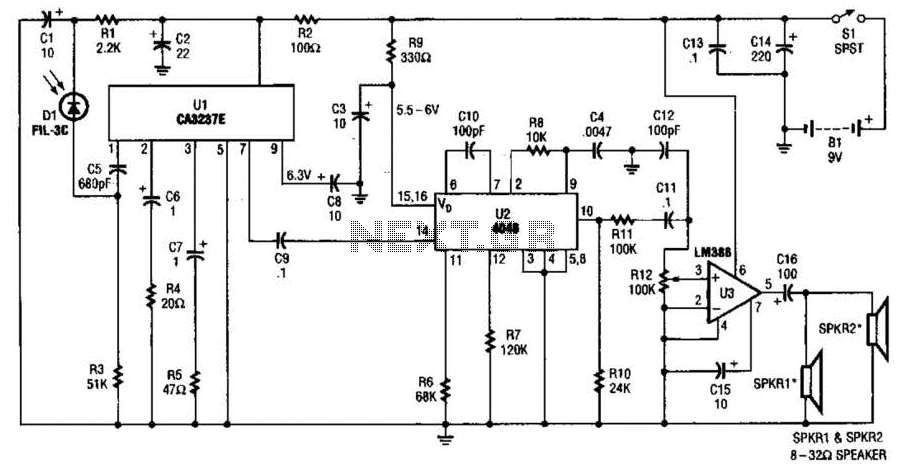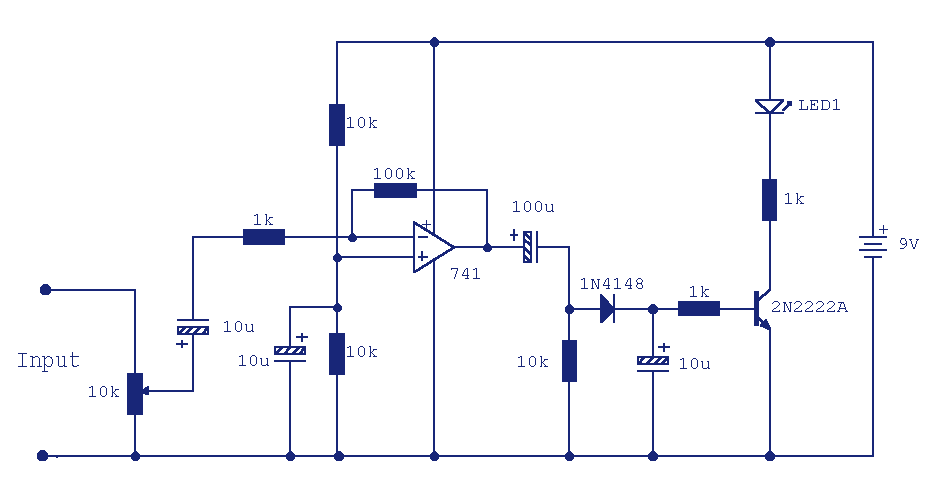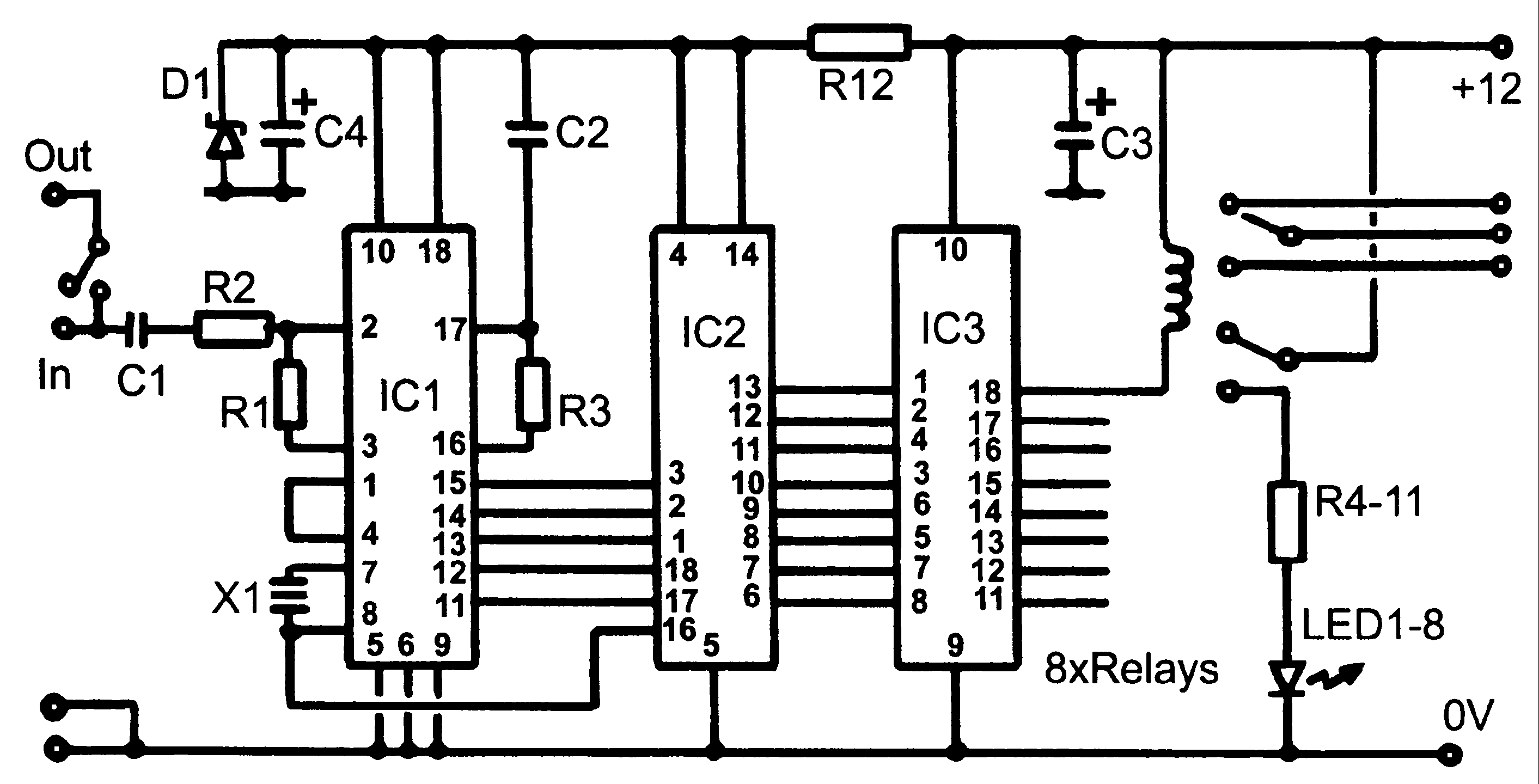
50W Audio Amplifier Circuit
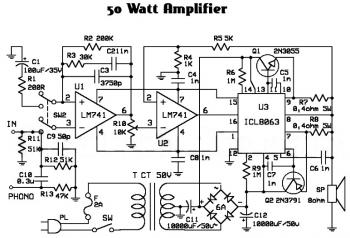
An audio amplifier is an electronic device designed to amplify low-power audio signals, which primarily consist of frequencies ranging from 20 Hz to 20,000 Hz, the human range of hearing. This amplification is necessary to drive loudspeakers and represents the final stage in a typical audio playback chain. The preceding stages in this chain include low-power audio amplifiers that perform functions such as pre-amplification, equalization, tone control, and mixing effects, as well as audio sources like record players, CD players, and cassette players. Most audio amplifiers require these low-level inputs to conform to line levels. While the input signal to an audio amplifier may only measure a few hundred microwatts, its output can reach tens, hundreds, or even thousands of watts. Additional information about power audio amplifiers can be found on Wikipedia. A video tutorial is available that demonstrates how to build a simple audio amplifier using the LM386 amplifier chip, which can be constructed for less than $20, or potentially less than $8 in some regions, and is suitable for amplifying low-level audio signals from devices such as guitars, basses, or MP3 players.
An audio amplifier circuit typically consists of several key components, including the input stage, gain stage, and output stage. The input stage is responsible for receiving the low-level audio signal, often from a source such as a microphone or a musical instrument. This stage may include a preamplifier to boost the signal to a usable level.
The gain stage is where the primary amplification occurs. In many audio amplifier designs, operational amplifiers (op-amps) or dedicated audio amplifier ICs, such as the LM386, are utilized. The LM386 is particularly popular due to its low cost, compact size, and ability to deliver a significant amount of power for small applications. This stage may also incorporate feedback mechanisms to stabilize gain and reduce distortion.
The output stage is responsible for delivering the amplified audio signal to the loudspeakers. This stage often includes power transistors or MOSFETs that can handle higher currents and voltages. Additionally, capacitors and inductors may be used to filter out unwanted frequencies and prevent clipping of the audio signal, ensuring that the output remains clean and within the desired frequency range.
Power supply considerations are also critical in audio amplifier design. A stable and adequately rated power supply is necessary to ensure that the amplifier operates efficiently and can deliver the required output power without distortion. Power supply decoupling capacitors are often included to minimize noise and provide transient response during dynamic audio signals.
Overall, audio amplifiers play a crucial role in audio systems by enhancing low-level signals to a level suitable for loudspeakers, contributing to the overall sound quality and listening experience.An audio amplifier is an electronic amplifier that amplifies low-power audio signals (signals composed primarily of frequencies between 20 - 20 000 Hz, the human range of hearing) to a level suitable for driving loudspeakers and is the final stage in a typical audio playback chain. The preceding stages in such a chain are low power audio amplifier s which perform tasks like pre-amplification, equalization, tone control, mixing/effects, or audio sources like record players, CD players, and cassette players. Most audio amplifiers require these low-level inputs to adhere to line levels. While the input signal to an audio amplifier may measure only a few hundred microwatts, its output may be tens, hundreds, or thousands of watts.
More explanation about power audio amplifier can be found at wikipedia. org This is a video tutorial about how to a very simple audio amplifier based on the LM386 amplifier chip. It can be built for less than $20 (or might be less than $8 in some countries) and used to amplify any low level audio signal including a guitar, bass or mp3 player.
🔗 External reference
An audio amplifier circuit typically consists of several key components, including the input stage, gain stage, and output stage. The input stage is responsible for receiving the low-level audio signal, often from a source such as a microphone or a musical instrument. This stage may include a preamplifier to boost the signal to a usable level.
The gain stage is where the primary amplification occurs. In many audio amplifier designs, operational amplifiers (op-amps) or dedicated audio amplifier ICs, such as the LM386, are utilized. The LM386 is particularly popular due to its low cost, compact size, and ability to deliver a significant amount of power for small applications. This stage may also incorporate feedback mechanisms to stabilize gain and reduce distortion.
The output stage is responsible for delivering the amplified audio signal to the loudspeakers. This stage often includes power transistors or MOSFETs that can handle higher currents and voltages. Additionally, capacitors and inductors may be used to filter out unwanted frequencies and prevent clipping of the audio signal, ensuring that the output remains clean and within the desired frequency range.
Power supply considerations are also critical in audio amplifier design. A stable and adequately rated power supply is necessary to ensure that the amplifier operates efficiently and can deliver the required output power without distortion. Power supply decoupling capacitors are often included to minimize noise and provide transient response during dynamic audio signals.
Overall, audio amplifiers play a crucial role in audio systems by enhancing low-level signals to a level suitable for loudspeakers, contributing to the overall sound quality and listening experience.An audio amplifier is an electronic amplifier that amplifies low-power audio signals (signals composed primarily of frequencies between 20 - 20 000 Hz, the human range of hearing) to a level suitable for driving loudspeakers and is the final stage in a typical audio playback chain. The preceding stages in such a chain are low power audio amplifier s which perform tasks like pre-amplification, equalization, tone control, mixing/effects, or audio sources like record players, CD players, and cassette players. Most audio amplifiers require these low-level inputs to adhere to line levels. While the input signal to an audio amplifier may measure only a few hundred microwatts, its output may be tens, hundreds, or thousands of watts.
More explanation about power audio amplifier can be found at wikipedia. org This is a video tutorial about how to a very simple audio amplifier based on the LM386 amplifier chip. It can be built for less than $20 (or might be less than $8 in some countries) and used to amplify any low level audio signal including a guitar, bass or mp3 player.
🔗 External reference
